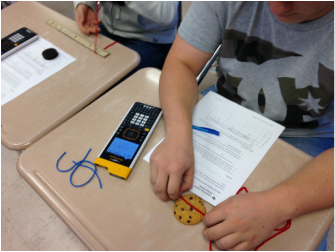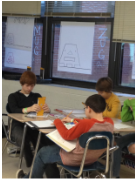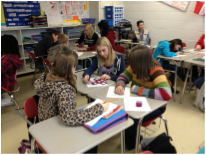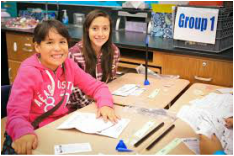7th Grade Mathematics
|
Grade 7 mathematics focuses on four critical areas:
|
First QuarterDuring the first 9-weeks...
Students extend their understanding of ratios and develop understanding of proportionality to:
Ratio and Proportions:1,2 Geometry: 1 Number Systems: 1,2,3 Expressions and Equations: 1,4b |
Second QuarterDuring the second 9-weeks...
Students will continue working with rational numbers including operations with and application of integers. They will use the arithmetic of rational numbers to:
Number Systems: 3 Expressions and Equations: 1, 2,3,4 |
Third QuarterDuring the third nine weeks.
Students will:
Ratio and Proportion:2d,3 Expressions and Equations: 2,3,4a Geometry: 2,3,4,6 |
Fourth QuarterDuring the fourth nine weeks...
Students connect their work with equations to geometry by
Geometry: 5 Statistics and Probability: 1,2,3,4,5,6,7,8 |
The Big Ideas: Click in order to get additional information and support





